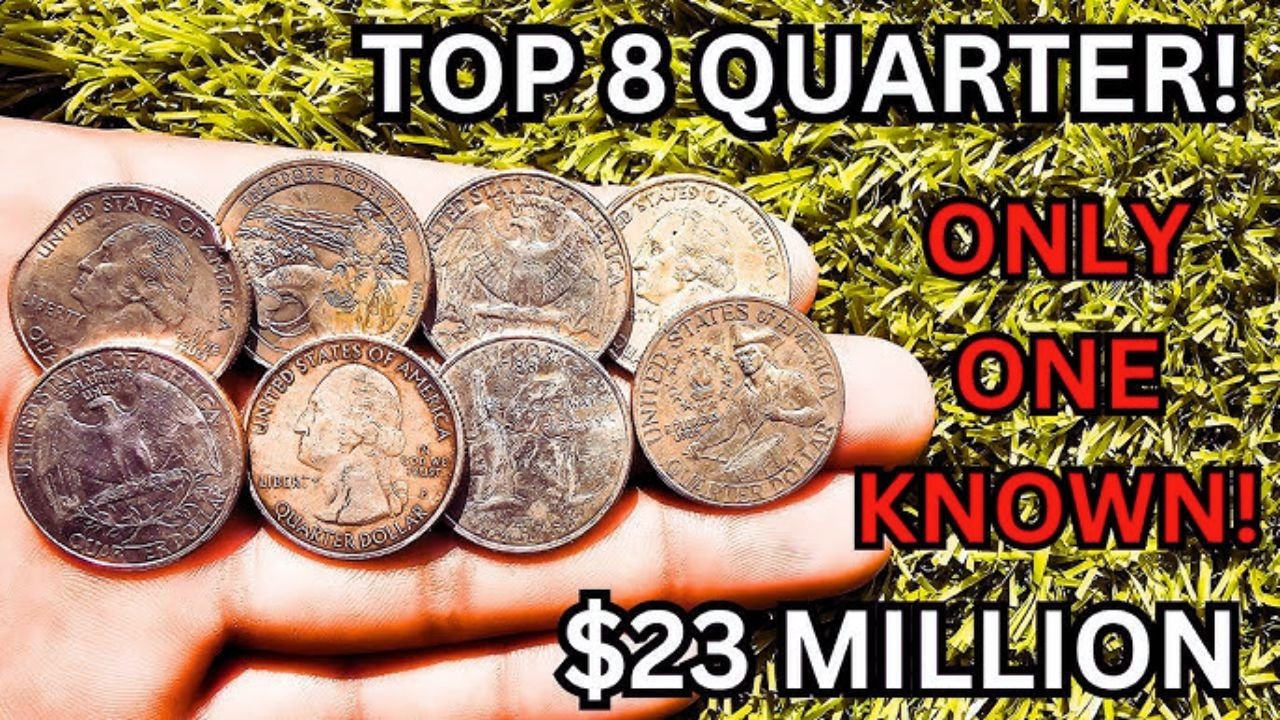A Hidden Fortune in Loose Change
Imagine finding a quarter in your pocket worth more than a gold bar. Across the United States, eight rare quarters have collectors buzzing, with some valued at over a million dollars each. These coins, mostly from the early days of U.S. minting, have unique features that make them treasures. They could be hiding in coin jars, old wallets, or even your change from the corner store. The idea of stumbling upon such wealth has sparked excitement among everyday Americans eager to check their spare change.
Why These Quarters Are So Valuable
These eight quarters stand out due to their rarity, historical importance, or minting errors. Some were made in tiny batches, like test coins never meant for circulation. Others have mistakes, like doubled designs or wrong metal blends, making them one of a kind. For example, a 1976 Bicentennial Quarter with a rare error sold for $1.2 million at auction in 2024. Collectors prize these coins for their scarcity and connection to U.S. history, driving their value far beyond a gold bar’s worth, which is around $1 million for a standard 400-ounce bar.
The Famous Eight Quarters
Here’s a quick look at these valuable quarters:
| Coin Name | Key Feature |
|---|---|
| 1796 Draped Bust Quarter | First U.S. quarter, only 6,146 made. |
| 1804 Draped Bust Quarter | Rare, only a few in top condition. |
| 1823/2 Capped Bust Quarter | Overdate error, very few exist. |
| 1838 Seated Liberty Quarter | Proof version, under 10 known. |
| 1870-CC Seated Liberty Quarter | First Carson City mint, low production. |
| 1916 Standing Liberty Quarter | First year, exposed design caused controversy. |
| 1932-D Washington Quarter | Low mintage, high demand. |
| 1976-S Bicentennial Quarter | Silver proof with double die error. |
Each coin has a unique story, like the 1796 quarter being America’s first, or the 1976 error coin showing a doubled drummer design.
How They Ended Up in Circulation
Many of these quarters were minted in small numbers or as special editions, but some slipped into everyday use. Mint errors, like using the wrong metal or stamping mistakes, happened during rushed production. Others were spent by people unaware of their value, especially during tough economic times. Today, these coins might hide in bank rolls, old collections, or even vending machine change. Their rarity and the chance of finding one keep collectors and regular folks searching.
How to Spot a Million-Dollar Quarter
If you find a quarter, check these details:
| Check This | Why It Matters |
|---|---|
| Date | Look for years like 1796, 1804, or 1976. |
| Mint Mark | Letters like “CC” or “D” can signal rarity. |
| Errors | Doubled text or odd designs boost value. |
| Condition | Less wear means higher worth. |
Use a magnifying glass to spot tiny errors. Don’t clean the coin, as it can lower its value. Take it to a coin shop or grading service like PCGS for a professional check.
Where to Look for These Coins
Check places where old coins might linger, like family heirlooms, flea markets, or bank coin rolls. Some have found rare quarters in change from small stores or laundromats. Estate sales or your grandparents’ coin stash could hold surprises. The thrill of discovery makes searching fun, as a single coin could change your life.
What to Do If You Find One
If you think you’ve found a rare quarter, handle it gently. Store it in a soft cloth or coin holder to avoid damage. Get it appraised by a trusted expert to confirm its authenticity and value. A 1932-D Washington Quarter in great condition sold for $1.5 million in 2023, showing how condition matters. With eight quarters out there worth millions, your next handful of change could hold a fortune.
